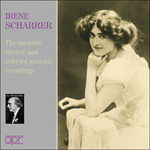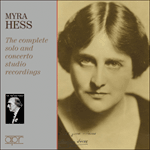To many people the most obvious feature of the Sonata in C major, Kk159, is that it imitates hunting horns at the beginning. Which indeed it does. But for any Italian, especially one from Naples (Scarlatti’s birthplace), this sonata is above all a tarantella—a Neapolitan dance if ever there was one. One of the chief characteristics of the tarantella is its alternation of major and minor, and this sonata does exactly that: the second section opens in C minor and stays rooted to the minor mode until the resumption of the theme after the descending flourish. This sonata also hints at classical sonata form with the re-exposition of the opening material in the tonic key. (Incidentally, in bars 57–59 I adopt the text in the Longo edition, which mirrors the similar passage of bars 18–20. Surely this passage must have depended on the range of the instrument available to Scarlatti when he wrote the sonata. Some 28 of the 555 sonatas include this top G, and I can’t help thinking that Scarlatti would have utilized it had it been available.)
from notes by Angela Hewitt © 2016
Nombreux sont ceux pour qui le trait le plus flagrant de ce morceau est l’imitation des cors de chasse au début, bien réelle en vérité. Mais pour un Italien, surtout s’il est de Naples (le lieu de naissance de Scarlatti), cette sonate est avant tout une tarentelle—, danse napolitaine s’il en est. L’une des principales caractéristiques de la tarentelle est l’alternance entre majeur et mineur, et c’est exactement ce qui se passe dans cette sonate: le début de la seconde section commence en ut mineur et reste enraciné dans le mode mineur jusqu’à la reprise du thème après le trait descendant. Cette sonate fait aussi allusion à la forme sonate classique avec la réexposition du matériel initial à la tonique. (Soit dit en passant, aux mesures 57–59, j’adopte le texte de l’édition Longo, qui reflète le passage analogue des mesures 18–20. Ce passage devait sûrement dépendre de la tessiture de l’instrument dont disposait Scarlatti lorsqu’il a écrit cette sonate. Environ 28 des 555 sonates comportent ce sol aigu et je ne peux m’empêcher de penser que Scarlatti l’aurait utilisé s’il avait été disponible.)
extrait des notes rédigées par Angela Hewitt © 2016
Français: Marie-Stella Pâris
Die Imitation der Jagdhörner fällt vielen zunächst besonders auf—und es handelt sich dabei durchaus auch um ein wichtiges Merkmal des Stücks. Doch für einen Italiener (noch dazu einen, der wie Scarlatti aus Neapel stammt) ist diese Sonate in erster Linie eine Tarantella, ein typisch neapolitanischer Tanz. Ein Hauptcharakteristikum der Tarantella besteht in dem Alternieren zwischen Dur und Moll, und in dieser Sonate passiert genau das: der Beginn des zweiten Teils fängt in c-Moll an und bleibt in Moll bis das Thema nach der absteigenden Figur wiederaufgenommen wird. Diese Sonate spielt zudem auf die klassische Sonatenhauptsatzform an, indem eine nochmalige Exposition des Anfangsmaterials in der Tonika stattfindet. (Dabei ist anzumerken, dass ich mich in den Takten 57–59 nach der Longo-Ausgabe richte, wo die ähnliche Passage der Takte 18–20 widergespiegelt wird. Diese Passage muss sich wohl nach dem Instrument gerichtet haben, das Scarlatti beim Komponieren zur Verfügung stand. In 28 der 555 Sonaten kommt dieses hohe G vor, und ich bin mir sicher, dass Scarlatti es häufiger zum Einsatz gebracht hätte, wenn sich die Gelegenheit dazu geboten hätte.)
aus dem Begleittext von Angela Hewitt © 2016
Deutsch: Viola Scheffel


 Irene Scharrer - The complete electric and selected acoustic recordings
Irene Scharrer - The complete electric and selected acoustic recordings Myra Hess - The complete solo and concerto studio recordings
Myra Hess - The complete solo and concerto studio recordings Scarlatti (D): Sonatas, Vol. 1
Scarlatti (D): Sonatas, Vol. 1
